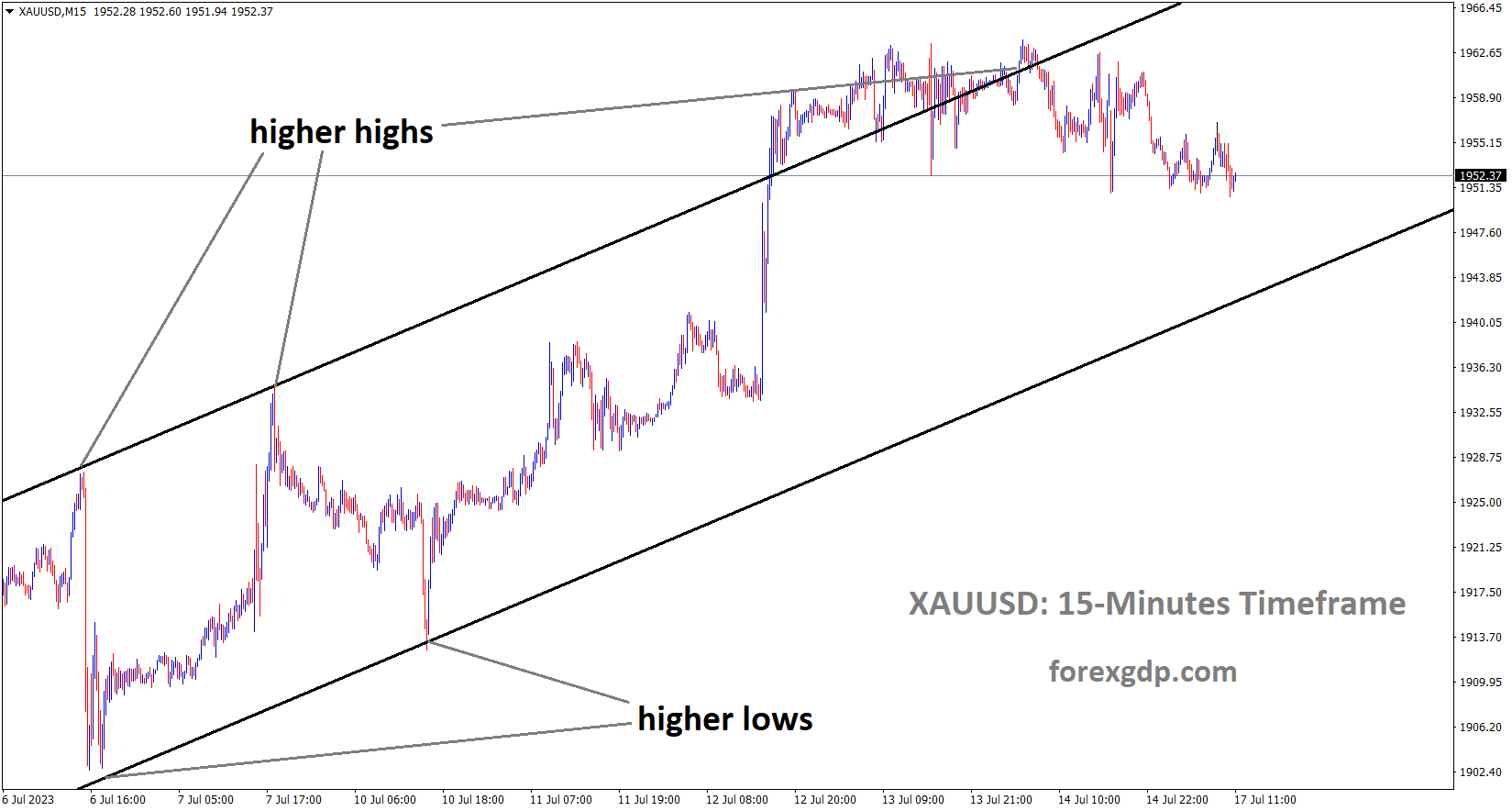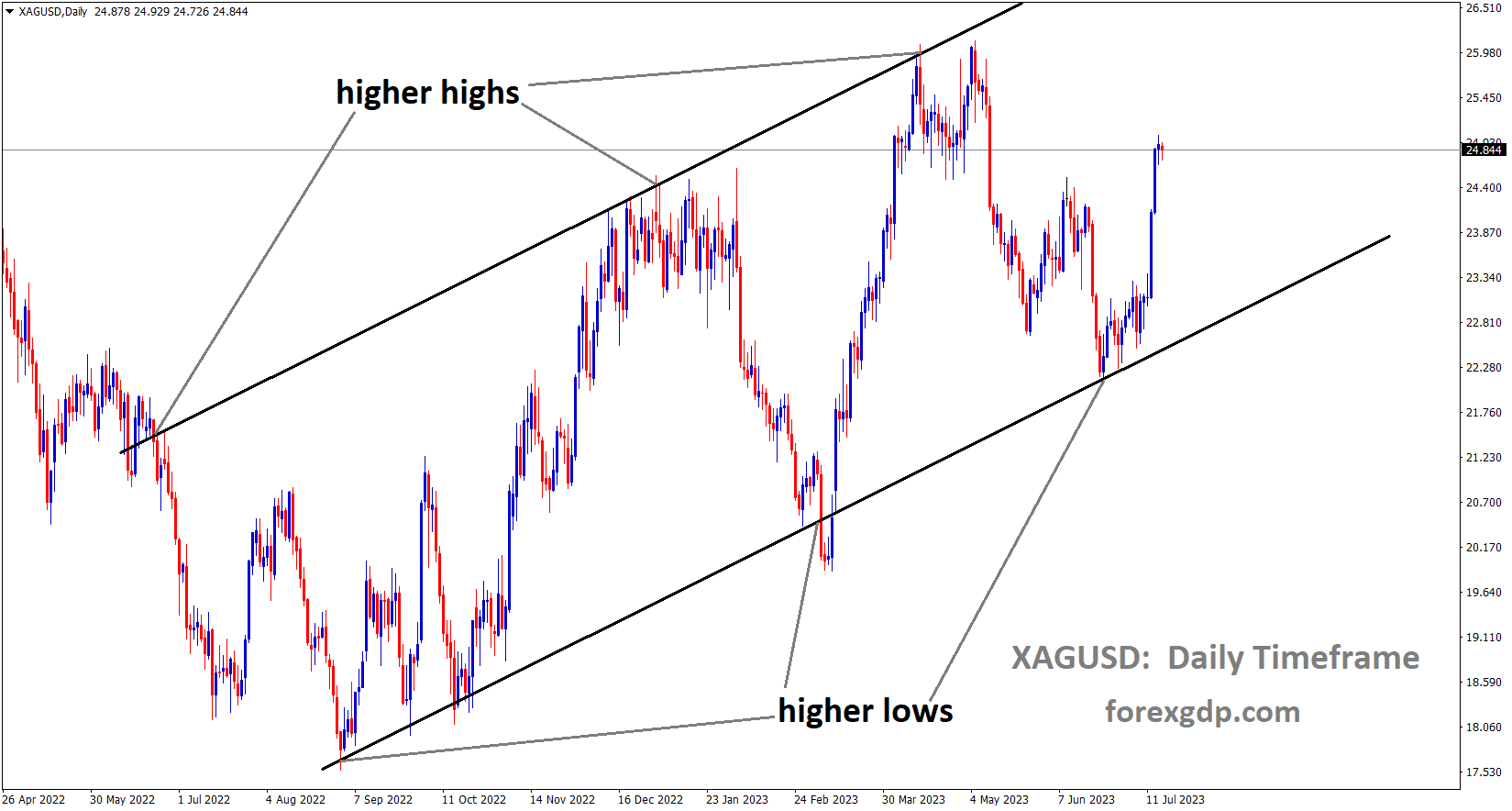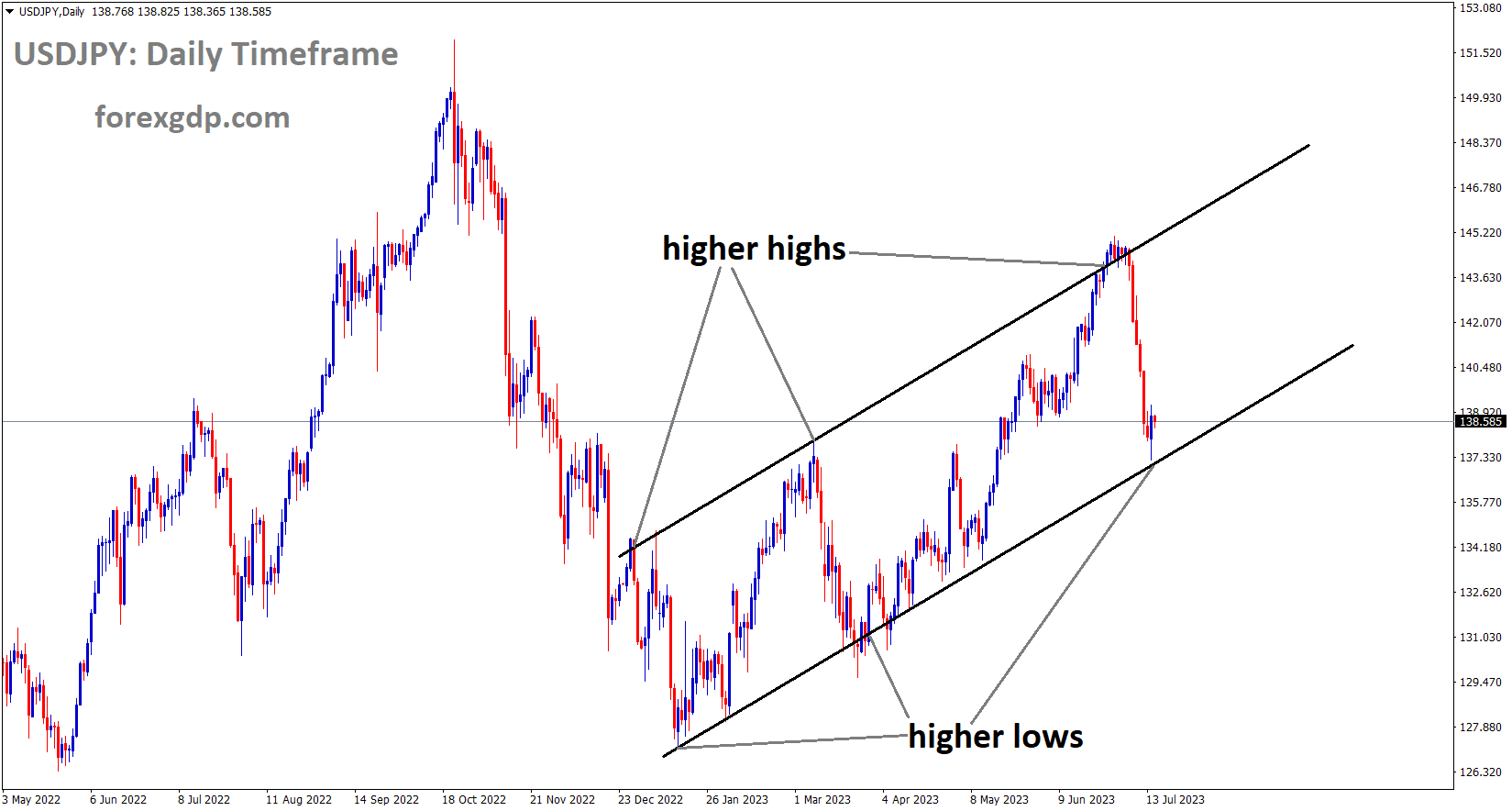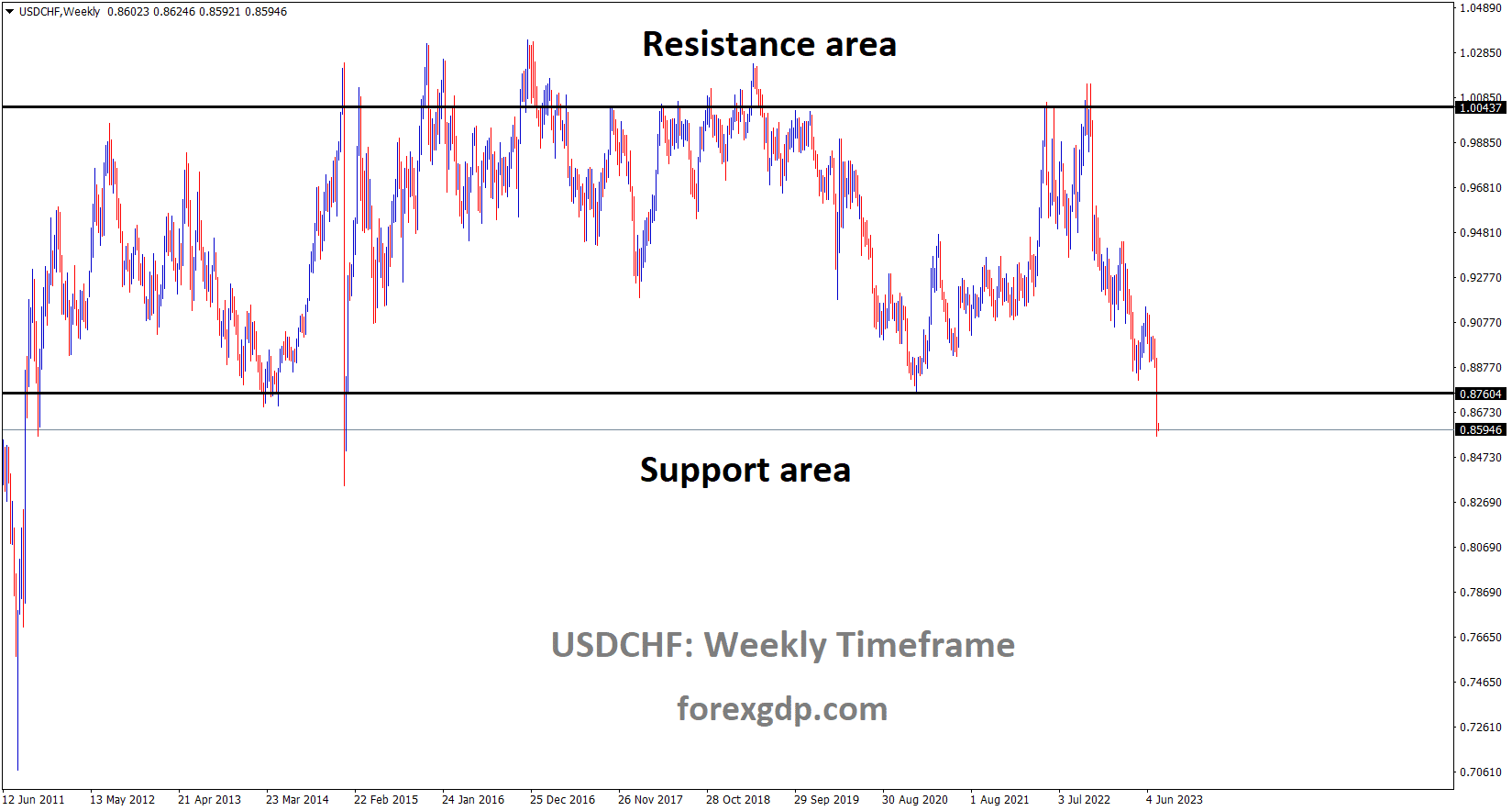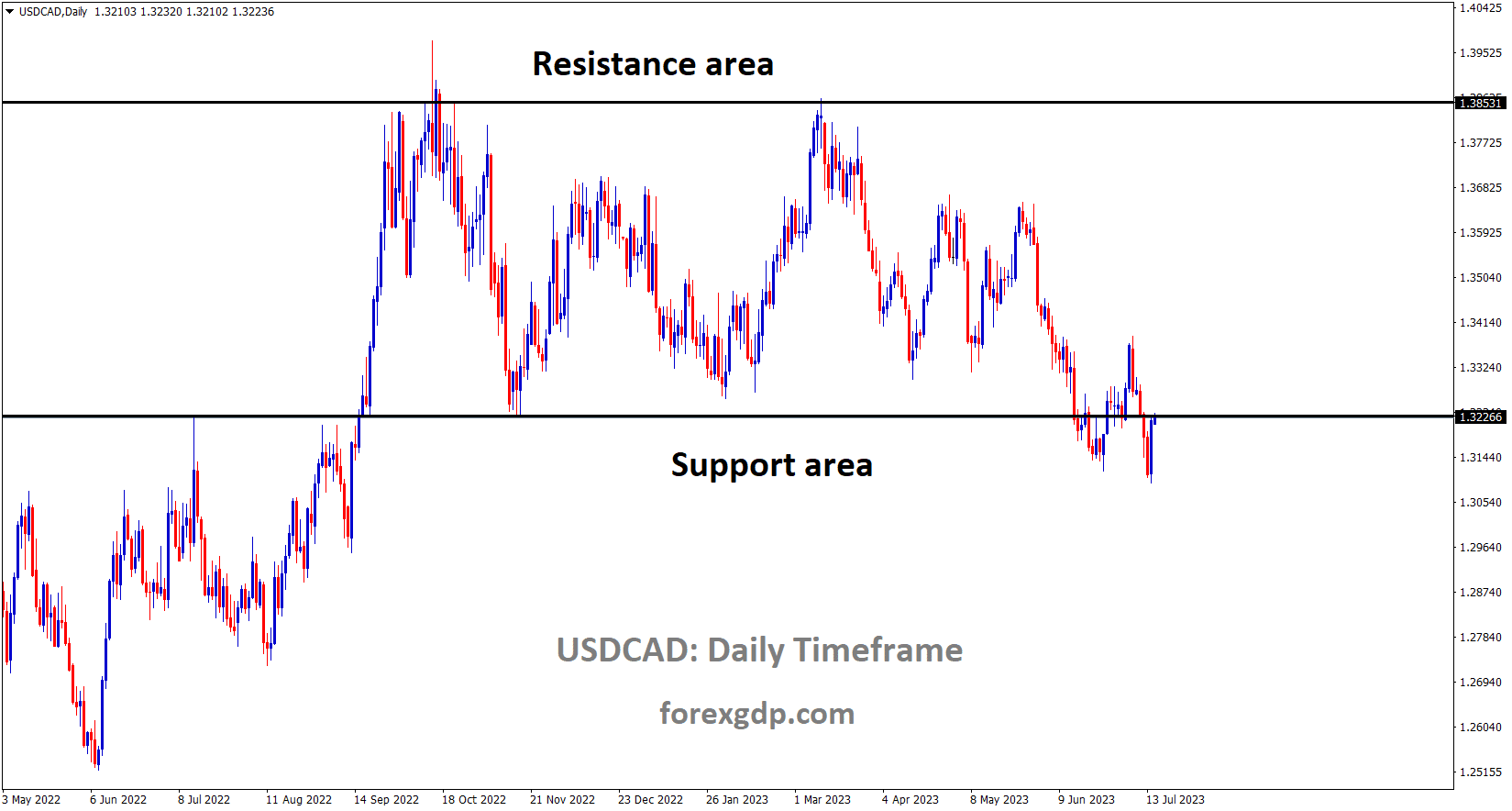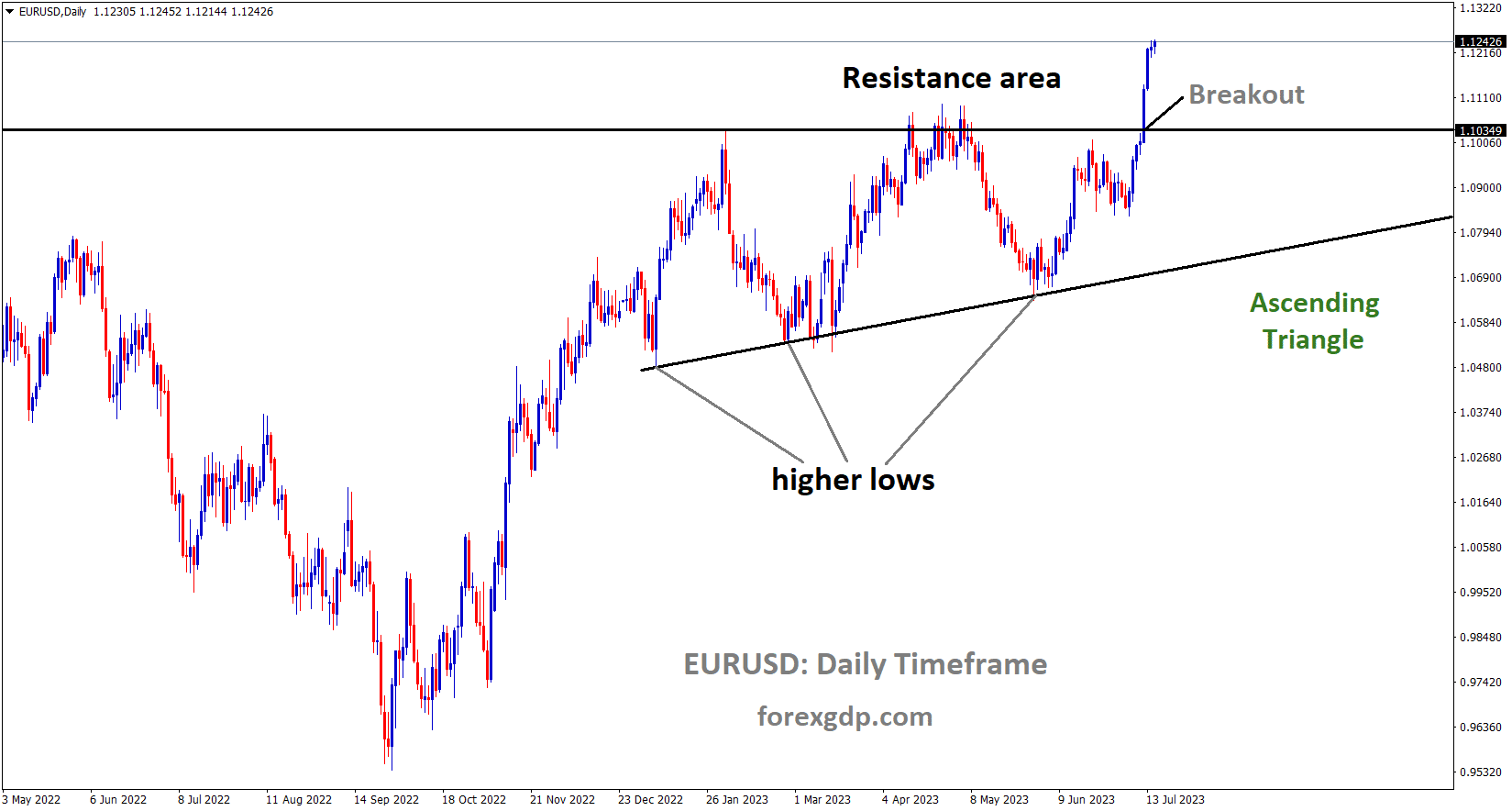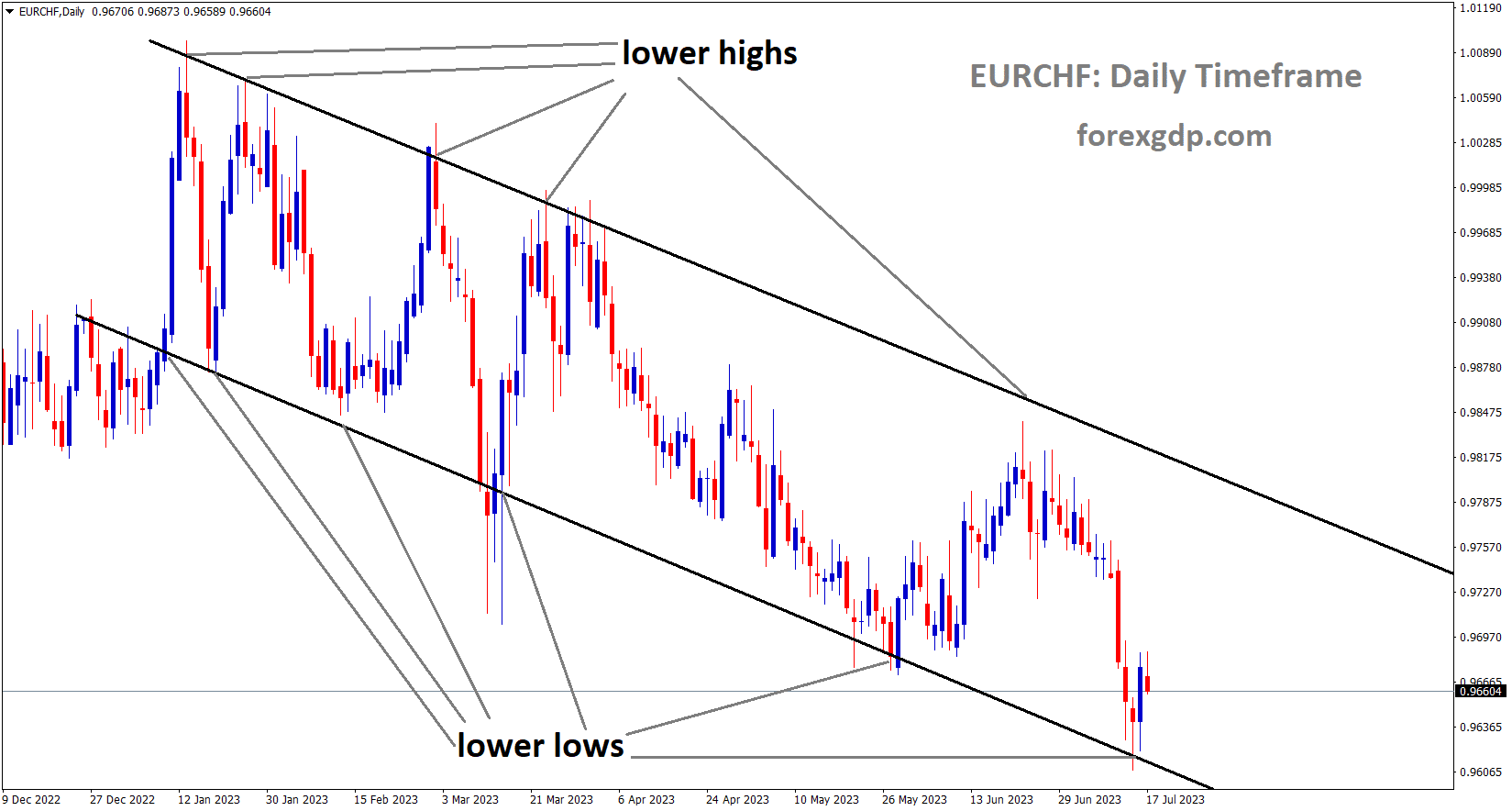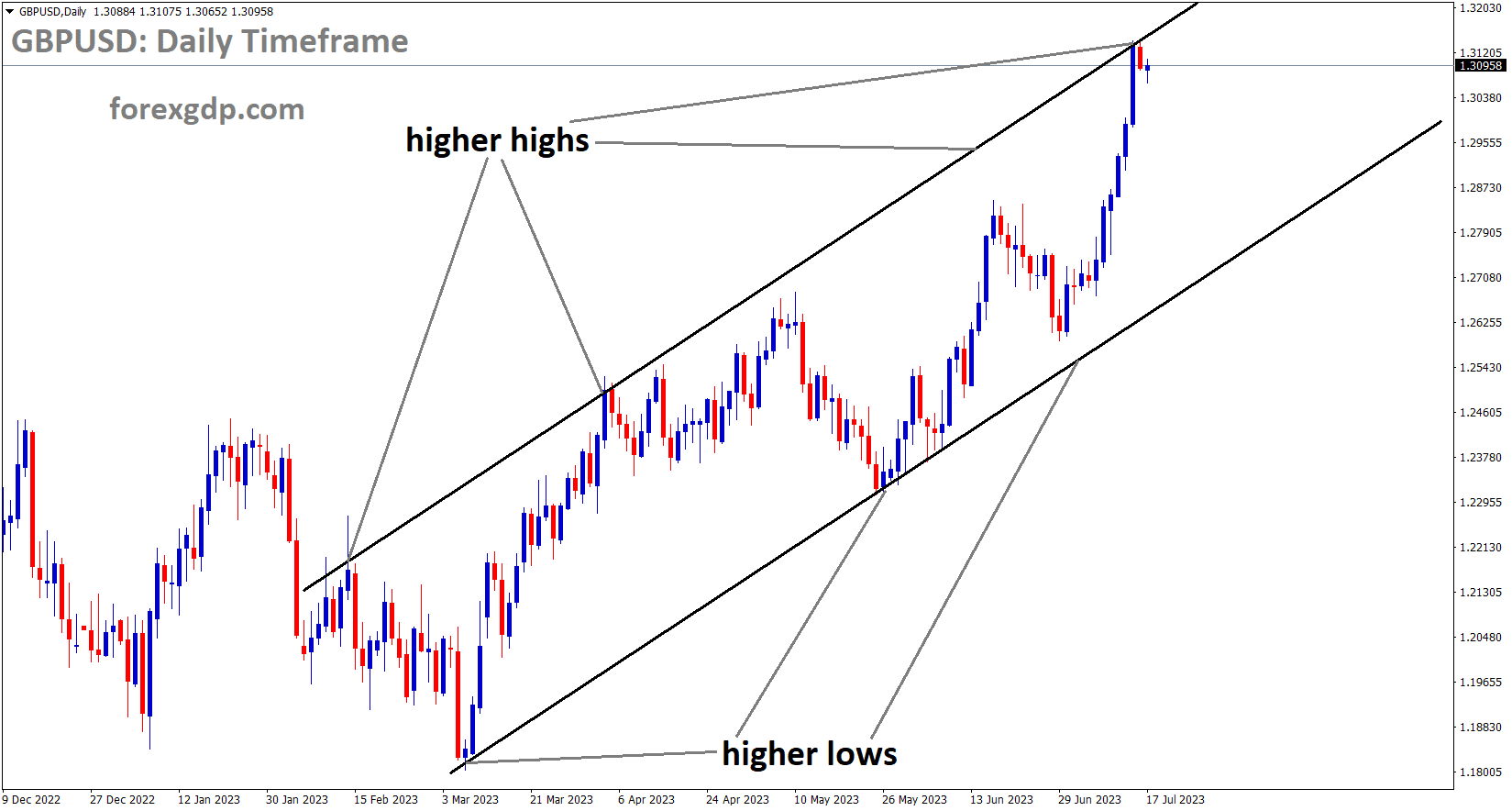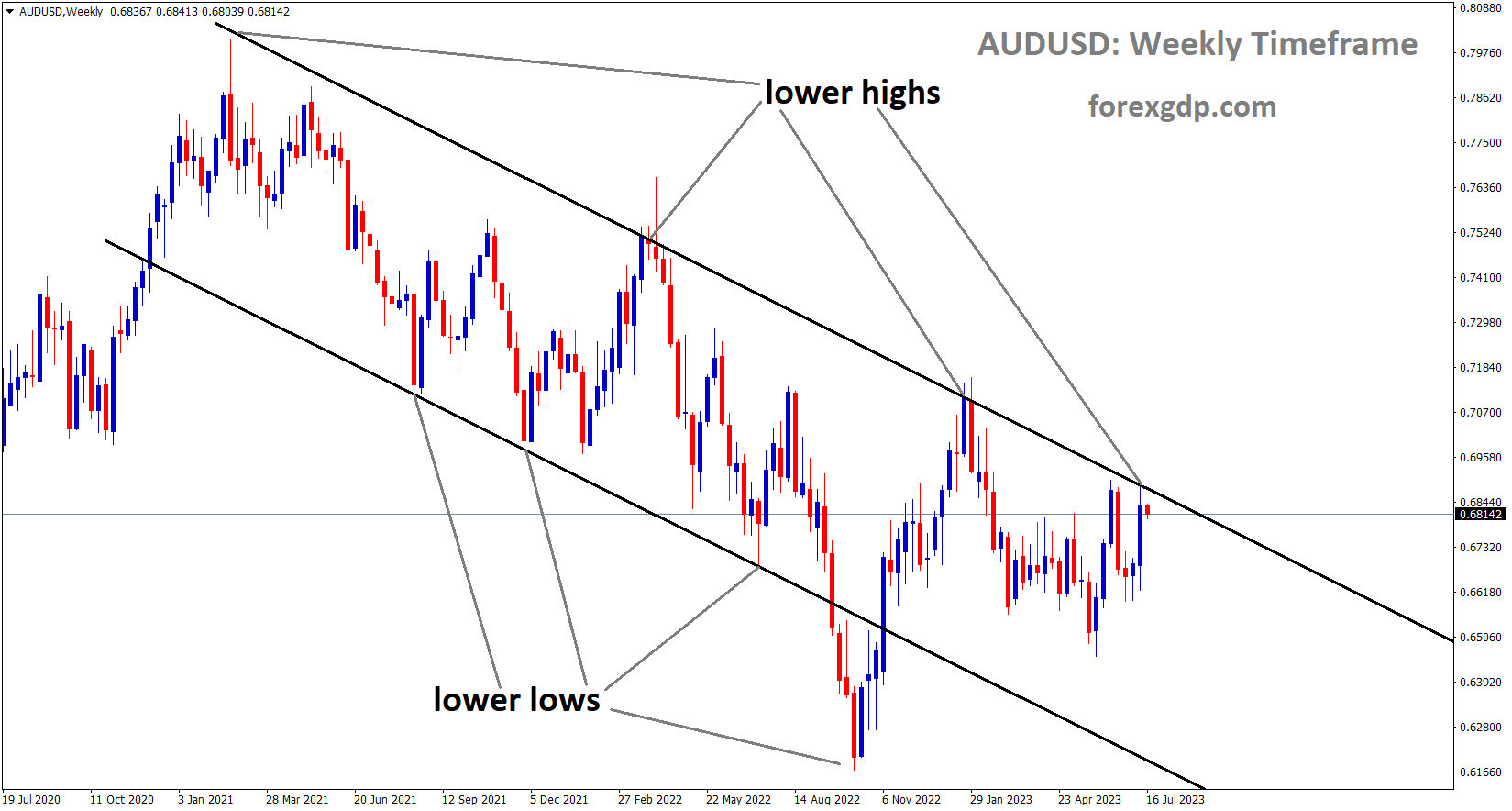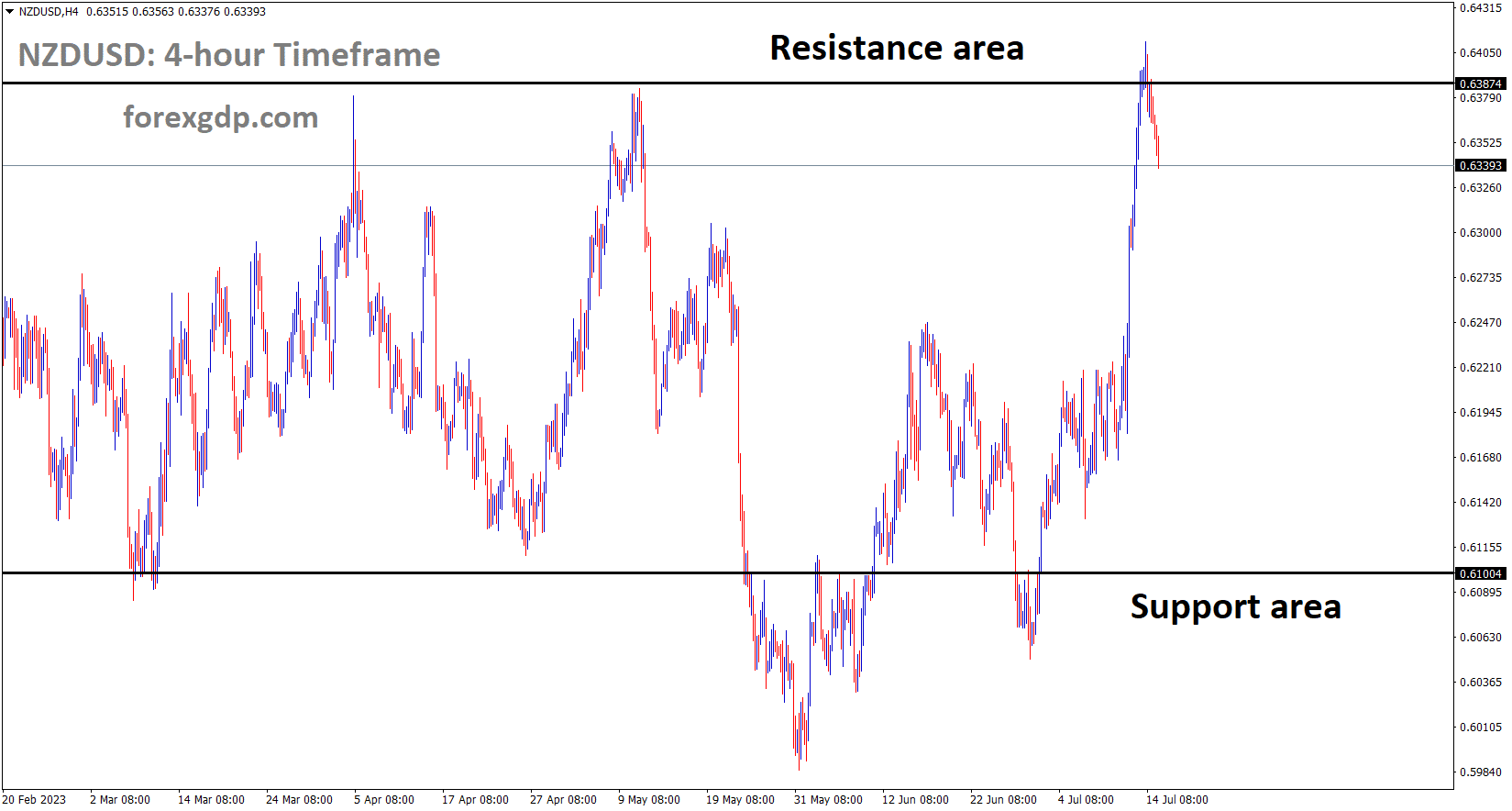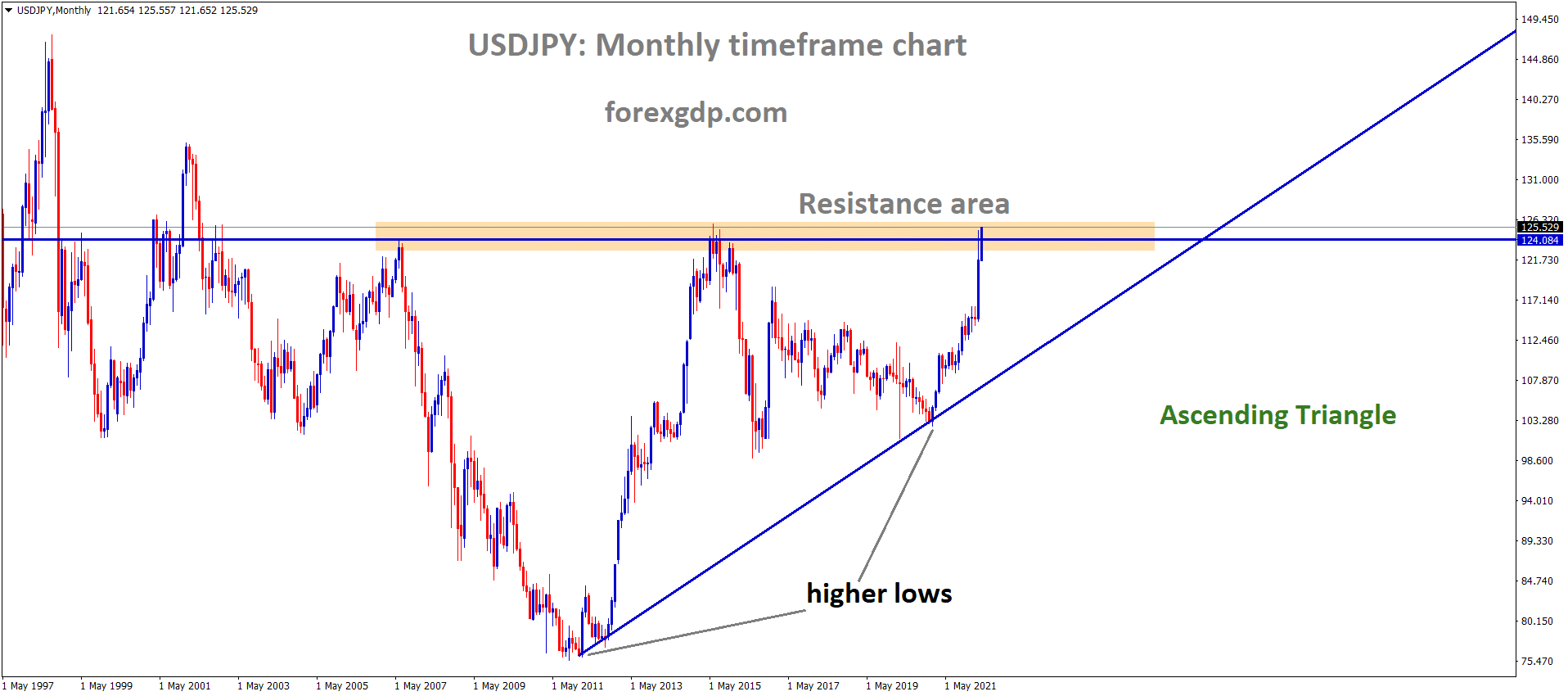XAUUSD Analysis
XAUUSD Gold Price is moving in an Ascending channel and the market has fallen from the higher high area of the channel.
Following the dramatic drop in US CPI last week, gold prices are rising. The likelihood that the FED will raise interest rates by 25 basis points at its meeting on July 26 favours gold relative to the USD.
As the market assesses the future of the US Dollar, the price of gold has stopped rising recently. The ‘big dollar’ is ticking up a little bit, which has caused the price of gold to ease to start the week. The market revised its assessment of the amount of tightening that the Federal Reserve will need to implement in order to contain price pressures after last week’s soft inflation data in the US. Treasury yields have retreated from their most recent peaks as PPI and CPI have declined. He is currently trading near 3.8% on the benchmark 10-year note after flirting with 4.1% a little over a week ago. Earlier this month, the 2-year bond reached a 17-year high above 5.1%; however, it is now back below 4.8%. While the gold futures contract only saw a 1.65% gain last week, the DXY index nearly lost 2.25%. Since April 2022, the index dropped to its lowest point.
XAGUSD Analysis
XAGUSD Silver Price is moving in an Ascending channel and the market has rebounded from the higher low area of the channel.
When the Federal Open Market Committee (FOMC) meets on July 26th, there is a strong likelihood that the overnight target rate will increase by 25 basis points. The data points in the coming week could cause market volatility because the Fed is currently in a blackout period prior to its meeting. Numerous business sentiment surveys, retail sales, industrial production, housing market statistics, and employment data will all be released to the market. You can read the complete calendar here. The US real yield may be another factor to watch. There is occasionally a significant correlation between the 10-year portion of the curve’s inflation-adjusted return and gold.
USDJPY Analysis
USDJPY is moving in an Ascending channel and the market has reached the higher low area of the channel.
According to data from the Bank of Japan, household inflation expectations are rising faster than expected. Therefore, the Bank of Japan will soon alter the YCC control method, which last week strengthened the JPY against the USD.
After data from the United States US continued to show that inflation is slowing, USDJPY made some progress in regaining some of its earlier gains, but it is still on the verge of losing most of those gains. A rise in US consumer confidence at the same time propelled the pair towards its daily high of 139.15 before breaking its curse. The USDJPY is currently trading at 138.47, up 0.31% from its daily low of 137.21. After a report from the University of Michigan UoM showed an improvement in Consumer Sentiment, which was expected to print 65.5 but came in at 72.6m at a two-year high, the USDJPY increased during the most recent hour. According to Joanne Jsu, director of the University of Michigan Surveys of Consumers, “the sharp rise in sentiment was largely attributable to the continued slowdown in inflation along with stability in labour markets.” Additional information revealed that one-year inflation expectations were revised upward to 3.4% from 3.3% in June, while five-year inflation expectations were revised upward to 3.1% from 3%.
Other information from the US Department of Labour revealed a slowdown in US import and export prices for June, coming in below estimates on both an annual and yearly basis. The report was consistent with recent producer and consumer inflation data, and the data supported the US Federal Reserve’s Fed decision to maintain current interest rates, as prices are moving faster than expected towards the Fed’s 2% target. However, Fed policymakers emphasised that the fight against inflation has not yet been won and that additional tightening is required. The 10-year Treasury note rate is up two basis points to 3.793%, which is helping US Treasury bond yields recover some ground. This is good news for the US dollar. The US Dollar Index, a gauge of the performance of the dollar relative to a group of peers, stopped falling at 99.809 and increased by 0.03%. In Japan, a Bank of Japan BoJ survey revealed that household inflation expectations had increased, maintaining pressure on the BoJ. Additionally, the Japanese Yen’s JPY strong week against the majority of G8 FX currencies has been primarily attributed to expectations that the BoJ will modify its Yield Curve Control YCC.
USDCHF Analysis
USDCHF is moving in the Box pattern and the market has reached the Horizontal support area of the pattern.
Friday Positive results from the US Data of Michigan Consumer Confidence Index push the US slightly higher against the Swiss Franc. The Swiss Franc is strengthened against the USD as a result of SNB intervention in USD sales.
Although there is no follow-through, the USDCHF pair recovers about 35 pip from sub-0.8600 levels and is still close to its Friday-set low from January 2015. Spot prices are hovering around 0.8615 as of Monday morning, remaining essentially unchanged throughout the Asian session and consolidating the recent decline following extremely oversold conditions on the daily chart. The positive University of Michigan UoM Consumer Confidence Index, which was released on Friday, provides some support for the US Dollar USD and benefits the USDCHF pair. In fact, according to the preliminary report, the gauge increased to 72.6 in July, the highest level since September 2021, outperforming even the most optimistic predictions. Inflation expectations for the following year increased slightly from 3.3% in June to 3.4%, which is still below the peak of 5.4% in April 2022. However, despite growing expectations that the Federal Reserve Fed will soon end its cycle of policy tightening, any meaningful USD recovery from its lowest level since April 2022 appears elusive.
USDCAD Analysis
USDCAD is moving in the Box pattern and the market has reached the Horizontal support area of the pattern.
This week’s Canadian CPI due date is. Tuesday and last week saw a 25 bps increase by the Bank of Canada in favour of the Canadian Dollar. Lowered CPI and slowing demand result in CAD weakness.
After falling to its lowest point since September 2022, the USDCAD pair makes some progress in the early Asian session and maintains its position above the 1.3220 level. In the midst of the Federal Reserve Fed blackout scheduled for July 25–26, market participants will continue to analyse the most recent US inflation data and keep an eye on the Canadian Consumer Price Index due on Tuesday. The preliminary reading of the Consumer Confidence Index from the University of Michigan UoM rose to 72.6 from 64.4 in June, exceeding the market’s expectation of 65.5. Consumer inflation expectations over the next year and five years increased from 3.3% and 3% to 3.4% and 3.1%, respectively. The Producer Price Index PPI decreased from 0.9% to 0.1%, and US consumer prices increased by 3.0% annually from 4.0%. The data imply that inflationary pressures in the US economy are decreasing and that the Federal Reserve Fed, which is anticipated to raise interest rates at its next meeting on July 26, should be less aggressive in tightening monetary policy. The Federal Funds Rate FFR will probably remain in the range of 5.25%-5.50% through 2023, according to the CME FedWatch Tool.
On the other hand, at its July policy meeting on Wednesday, the Bank of Canada BoC increased the benchmark interest rates by 25 basis points bps, to 5.0%. According to Tiff Macklem, governor of the Bank of Canada, additional interest rate increases are required to reduce price pressures and slow the growth of the economy’s demand. Inflation is anticipated to be around 3% next year before returning to the 2% target, he continued. Market participants will now follow the Canadian Consumer Price Index CPI, which is due later on Tuesday. Later in the week, the US docket will include the release of the Empire State Manufacturing Index and Retail Sales. Investors will search for new momentum and discover trading opportunities near the pair USDCAD.
EURUSD Analysis
EURUSD has broken the Ascending channel in upside.
The ECB’s planned rate increase of 25 basis points in July will help the euro against the dollar. In May, there was a 0.30 billion euro deficit in the Eurozone.
The euro is more positively impacted by two additional rate hikes in the ECB table than by one additional rate hike in the FED table.
The investors continue to expect that the Federal Reserve may be nearing the end of its tightening campaign, which puts the US dollar under a lot of pressure. Recent evidence of cooling US consumer prices and the ongoing downward trend in producer prices have strengthened this opinion. Meanwhile, remarks made by FOMC Governor Christopher Waller late on Thursday aligned with the committee’s prevailing hawkish narrative after he suggested that the Fed might need to raise rates twice more this year.
Lower-than-expected US inflation data for the month of June, which confirm that disinflationary forces are still in full force in the US economy and, secondly, support expectations that the Federal Reserve might end its ongoing hike campaign sooner rather than later, have rekindled the strong upward impulse in the pair. When it comes to the potential future actions of the Fed and the ECB in normalising their monetary policies, market participants have already largely priced in a quarter-point rate hike by both at their meetings later in the month. This is especially true given the growing concerns about an economic slowdown on both sides of the Atlantic.
EURCHF Analysis
EURCHF is moving in the Descending channel and the market has reached the lower low area of the channel.
After the widely anticipated 25 bps rate hike in July, market participants now appear to be confident that the US central bank will maintain interest rates at current levels. Data indicating further moderation in US consumer prices as well as the fact that the US PPI registered the smallest annual increase in June in nearly three years served to confirm the bets. This, along with indications that the US labour market is cooling, should enable the Fed to moderate its hawkish stance, preventing USD bulls from making aggressive bullish bets and, for the time being, containing the USDCHF pair. In addition, a slight decline in US equity futures could strengthen the safe-haven Swiss Franc CHF and help further limit spot price gains. This makes it wise to hold off on positioning for any significant upside until there is strong follow-through buying before concluding that the recent steep decline seen over the past week or so has ended. Moving forward, the US Empire State Manufacturing Index could have an impact on the price dynamics of the USD and give the USDCHF pair some momentum later in the early North American session.
GBPUSD Analysis
GBPUSD is moving in an Ascending channel and the market has reached the higher high area of the channel.
The UK pound is getting stronger against the USD thanks to interest rate differences. This week, the UK CPI report is expected to be released; it shows an 8.2% decline in June and an 8.7% print in May.
The Bank of England can breathe easier because of hot CPI data in the UK economy thanks to lower CPI.
The expectation that UK interest rates will continue to rise in a concerted effort to lower stubbornly high inflation has helped the British pound trade favourably against a wide range of currencies. For the foreseeable future, GBP pair prices are likely to move higher as interest rate differentials widen in favour of the British pound.
The most recent UK inflation report will be released on Wednesday, and this could alter the situation. Although UK inflation is still high, Bank of England governor Andrew Bailey has been predicting for months that it will soon fall sharply. While the closely watched core inflation rate is predicted to remain unchanged at 7.1%, headline inflation is projected to drop to 8.2% in June from 8.7% in May. Sterling may decline from its current levels if one or both of these parameters are lower than expected.
AUDUSD Analysis
AUDUSD is moving in the Descending channel and the market has reached the lower high area of the channel.
Following the release of data showing that China’s GDP expanded less than anticipated, the Australian Dollar barely changed. China’s second-quarter data came in at 6.3% instead of the 7.3% expected, and June’s industrial production increased by 4.4% instead of the 2.7% predicted. The AUD/USD exchange rate is slightly down according to mixed data.
After the Chinese economy expanded less than anticipated in the second quarter, the Australian dollar managed to hold onto its day’s losses against the US dollar. In the April–June quarter, the Chinese economy expanded by 6.3% year over year versus the predicted 7.3% and the prior quarter’s 4.5%. In June, industrial production increased 4.4% year over year, exceeding the 2.7% expected and the 3.5% in May. In June, retail sales increased 3.1% year over year versus the expected 3.2% increase and 12.7% increase in May. In the period from January to June, fixed asset investment increased 3.8% year over year versus the anticipated 3.5%.
China’s macroeconomic data have disappointed in recent months, as evidenced by the China Economic Surprise Index, which is stuck at levels from before the country’s economic reopening earlier this year. Beijing has announced a number of measures in recent weeks to mitigate some of the risks to the economy, including reductions in important lending benchmarks, targeted actions towards new-energy vehicles, the real estate sector, and the booming generative AI sector, and a signal that the years-long crackdown on the technology sector is coming to an end. On the anticipation of additional government stimulus measures, alluring valuations, and improving financial conditions, analysts have already begun to upgrade the outlook for Chinese equities. Australia’s top bilateral trading partner for both goods and services is China. Any improvement in China’s growth prospects is positive for the future of the AUD. The Politburo meeting in late July and potential new stimulus measures, particularly in the infrastructure and real estate sectors, are now of utmost importance.
NZDUSD Analysis
NZDUSD is moving in the Box pattern and the market has fallen from the resistance area of the pattern.
Speaking at the China Business Summit in Auckland this week, New Zealand Prime Minister Chris Hipkins demonstrated the positive trade relations and ongoing maintenance in the Pacific between NZ and China.
According to Reuters, in a speech at the China Business Summit in Auckland on Monday, New Zealand Prime Minister (PM) Chris Hipkins said that as China grows more assertive, the Pacific region is becoming more contested and less secure. In his speech, NZ PM Hipkins stressed the importance of cooperating with like-minded parties while also demonstrating the need to communicate with Beijing. The decision-maker referred to New Zealand’s vulnerability as a result of its smaller economy and reliance on the consistency and predictability of international laws for its prosperity and security. In contrast, China’s ambassador to New Zealand responded to Prime Minister Hipkins’ speech by stating that despite their differences, the two nations’ relations are strong, stable, and thriving.
Don’t trade all the time, trade forex only at the confirmed trade setups.
Get Live Free Signals now: forexgdp.com/forex-signals/

